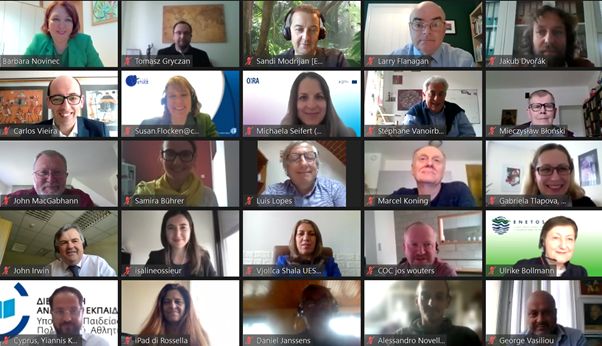
Gender Equality Index reveals digitalisation can worsen gender inequalities
The new Gender Equality Index sheds lights on increasing gender violence, job insecurity and worsening work-life balance for women linked to the digital transition. According to the report, at this pace the EU will not reach the gender equality before 2080, but new challenges, as the COVID-19 crisis, risk inflicting severe setbacks to the path toward gender-equal Europe. ETUCE calls on governments to implement effective measures to address the negative impacts of digitalisation on gender equality (including the right to disconnect) and to support the use of ICT for inclusion.
On 29 October, The European Institute for Gender Equality (EIGE) released the results of the Gender Equality Index 2020, the research that analyses the progress of gender equality in several domains such as work, money, knowledge, time spent in care and social activities, power, health and violence. With a score of 67.9 out of 100, the Index reveals that the road towards gender equality is still long. When zooming on single countries, data demonstrates that Sweden, Denmark and France are doing the best among European countries, while Greece, Hungary and Romania are the ones that need to work more towards gender equality.

This year the report focuses on the relation between digitalisation and gender equality. Among other consequences, data indicates the emergence of new gender-based violence, such as online harassment and cyber violence, with 1 out of 4 women victims of online harassment in the last year in Europe. Other evidences show that female workers are at a higher risk than male workers of being replaced by robots and remaining excluded from the benefits of digital innovation. This is mostly due to the large share of women in the care giving sector, and women being more often responsible for family care than men which prevents them from taking up upskilling or reskilling training opportunities. Furthermore, the increasing flexibility that digitalisation entails in working hours and places, is expected to exacerbate women’s work-life balance.
The report also underlines that the stagnation of the progress towards gender equality in the education sector which increased only by 0.1% since last year. Despite women scoring better in educational attainments than men, increasing gender segregation is the principle obstacle for gender equality after the lack of political, social and economic power. Data shows that 43% of female students in higher education choose study paths related to education, humanities and arts, while only 28% of women chose science, technology engineering and mathematics studies. The reasons explaining this segregation are not related to the educational performances but to social pressure deriving from gender social expectations about career choices. This dynamic has detrimental consequences on wealth and working conditions of women who often end up employed in low-skilled and lower remunerated jobs.
Commenting on these data, Susan Flocken, ETUCE European Director, underlines “As education trade unions, we are deeply concerned about the challenges of gender equality in connection to digitalisation in education. The ETUCE Action Plan on Gender Equality, highlights that digital teaching and learning, especially in times of COVID-19, has increased teachers’ workload and further jeopardises work-life balance. Moreover, women teachers are increasingly exposed to harassments and cyber-bullying. We demand that governments take effective and concrete measures, in social dialogue with trade unions, to address the issue of increasing gender-based violence. To ensure a sustainable work-life balance, we also expect that the definition of the professional life of the teaching profession and the right to disconnect are included in collective agreements”.
To read more about the Gender Equality Index 2020, please, click here.